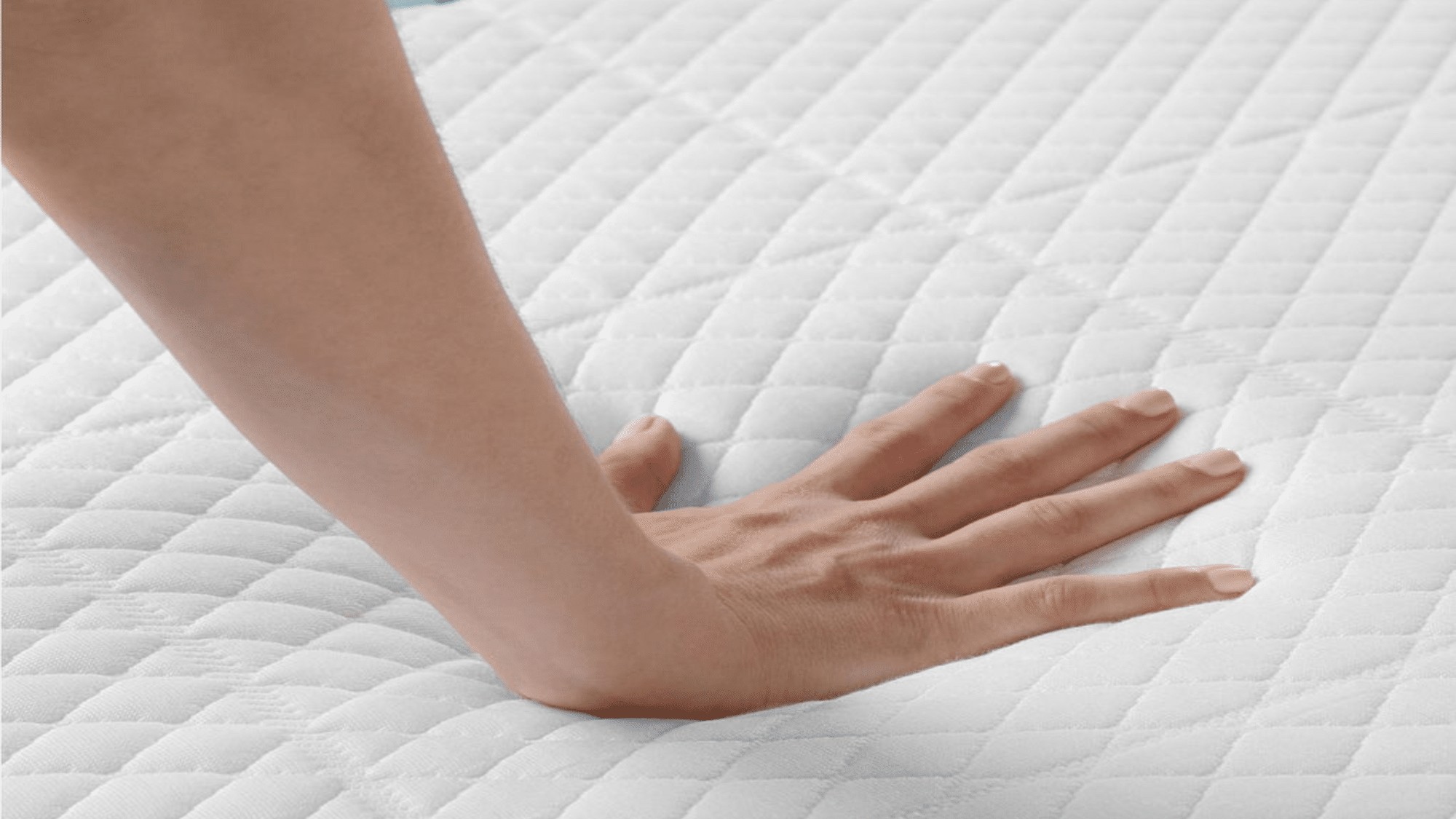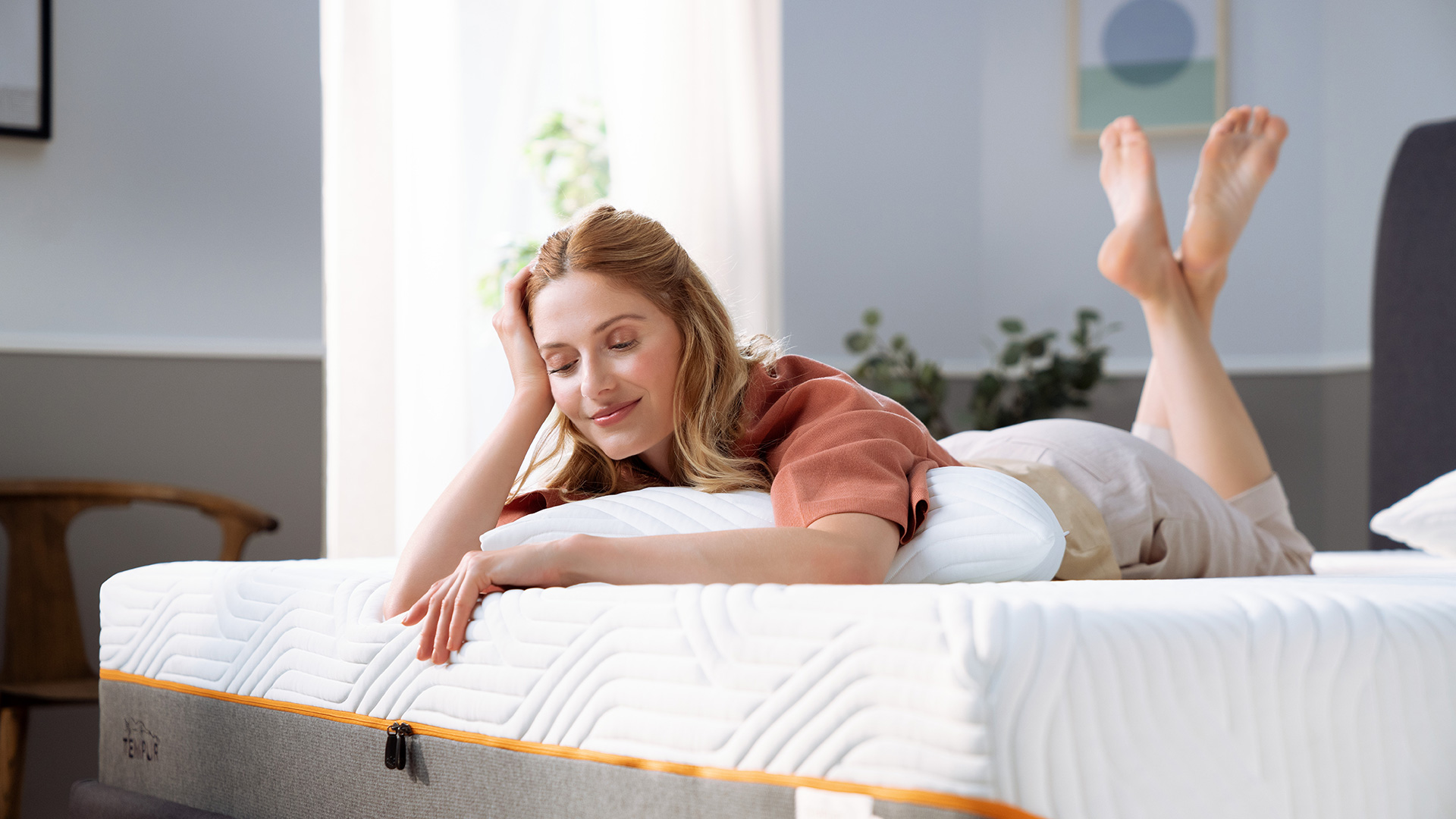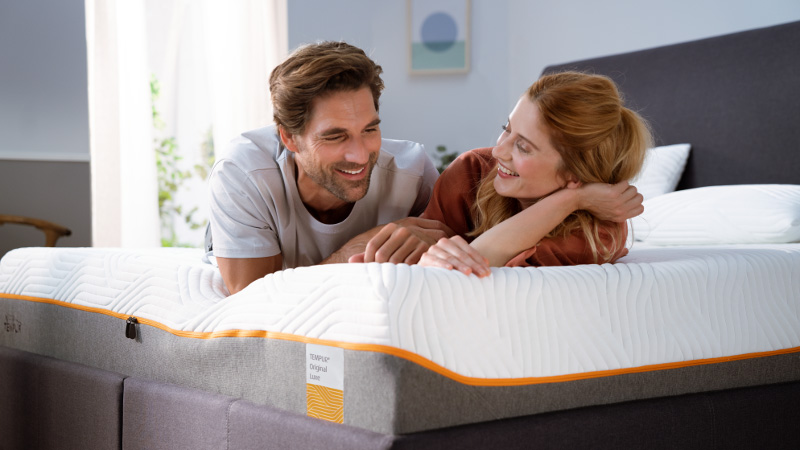Memory foam mattress guide: what is it, what it's made from and who's it suitable for?
Confused by memory foam mattresses? T3 is here to answer all your questions

Bethan Morgan

When you're looking to buy the best mattress, it's hard to ignore the memory foam options, as they've become undeniably popular. If you're used to traditional pocket sprung mattresses, you might be wondering exactly what a memory foam mattress actually is, and what the advantages and disadvantages are of buying one. That's where T3 can help.
In this memory foam mattress guide, we'll explain everything you need to know about they are, what they're made of, what they're like to sleep on and, most importantly, why they may (or may not) be the right mattress option for you.
Once you're clued up with the facts, you might decide that memory foam's the way to go for you; in which case see our guide to the best memory foam mattresses available now so that you can find the model that'll suit you best.
What is memory foam?
Memory foam, a.k.a visco-elastic foam, is a material originally designed by NASA in the 1960s, as a way of protecting astronauts from the extreme pressures they experienced on entering and exiting the Earth’s atmosphere.
The main constituent of memory foam is a polymer called polyurethane. This is solid and dense, but also has elastic properties. That means it compresses under pressure, but when that pressure is removed, it returns to its original shape.
Memory foam was later developed by NASA's Ames Research Center as a way of improving the safety of airline cushions, sports kit and medical equipment. Then, in the 1980s, the technology was transferred the public domain. It was first used in mattresses in 1991 by Tempur, which remains one of the most popular mattress brands on the market.
Today, there are a huge variety of memory foam mattresses available to choose from, ranging from soft to firm, and budget to luxury. They typically combine one or more layers of memory foam with other layers made of different foams, or other materials such as latex.
Get all the latest news, reviews, deals and buying guides on gorgeous tech, home and active products from the T3 experts
As memory foam is a petroleum-based material, this kind of mattress needs to be cleaned in a special way, or you risk seriously damaging it. To learn more, head to our article on how to clean a memory foam mattress.
What's memory foam like to sleep on?

When you lie on a traditional sprung mattress, the coils spring back, creating a feeling of bounce and being 'on top' of the mattress. In contrast, memory foam deforms under pressure. So instead of experiencing the same bounce-back, you sink into the mattress, and it moulds itself to the contours of your body.
Which feels better: memory foam or springs? In practice, that seems to vary from person to person. For some people, the way a memory foam mattress moulds to their body makes them feel safe, secured and cradled, like floating on a cloud. Others, though, say they feel stuck or trapped, like falling into quicksand. So there’s no ‘right’ answer here: it simply seems to be a matter of personal preference. And of course, the degree to which you'll 'sink' into a memory foam mattress varies a lot from model to model.
People respond so differently to memory foam mattresses, so most manufacturers provide a generous trial period of anywhere between three months and a year, so you can decide whether you want to keep it. Many also hedge their bets by offering hybrid mattresses, which combine springs and foam in an attempt to deliver the best of both worlds.
You'll also find memory foam starting to crop up in our best pillows list – we've found that this material can be extremely comfy in pillow form, once you've adjusted to the different sensation.
Are memory foam mattresses bad for the environment?
The environmental impact of memory foam is heavily disputed. Even the most casual bit of research into this area will throw up every viewpoint under the sun, making it very hard to confidently state what kind of mattress is best for the planet.
Some brands use bamboo in their foam – an example being the OTTY Pure mattress – in order to make it more sustainable, and others will use recycled materials, which can only be a good thing. We'd also always recommend investing in a quality mattress that'll last several years, rather than a dodgy cheap one that'll end up in landfill before you know it.
Memory foam mattresses: the pros
The main advantage of memory foam mattresses is they’re believed to provide better pressure relief and spinal alignment. For this reason, they’re recommended for people suffering from muscle, back or joint pain.
It’s important to note there have been few scientific studies to back up these claims. But anecdotally, many people say a memory foam mattress has helped them with aches and pains. And the basic principle – that supporting you along the curves and natural lines of your body is likely to relieve pain and aid restful sleep – does seem logical.

Memory foam is also better at absorbing movement, so if you share a bed with someone, you’re less likely to disturb them when shifting position during the night. It’s a good choice for allergy sufferers, too. The high density of the foam makes it difficult for dust mites, bed bugs, mould, food particles and other allergens to enter the mattress, helping to keep you safe over the long term.
If you tend to feel cold at night, memory foam is also a good choice. Despite plenty of claims to the contrary, pretty much all memory foam mattresses will warm up to some degree in response to your body heat. Finally, memory foam mattresses are in general more durable than sprung mattresses; something to take into account when comparing prices between the two.
Memory foam mattresses: the cons
The main disadvantage of memory foam mattresses is that they tend to retain body heat. This means they can become overheated and uncomfortable, especially if you live in a warm climate with high humidity.
That said, manufacturers are aware of this problem, and are constantly working to improve the design of their mattresses to counteract it. One common approach is to use a layer of open-cell memory foam, which has a different internal structure to encourage airflow and cooling. Another is to incorporate gel-infused memory foam, which mixes foam with cooling gel or beads to lower temperatures.
A further reason to avoid memory foam is if you’re prone to drinks spills, incontinence, or have unruly pets. That’s because any contact with water will damage the integrity of memory foam, and can dramatically shorten the life of even the most high quality mattress. A good mattress protector, however, can reduce the risk of that happening.
A final consideration is that the cheaper type of ‘bed-in-a-box’ memory foam mattresses often have an unpleasant smell when you first unpack them. However, this usually goes away after a few days. If you've weighed up the pros and cons, and are still keen to try out a memory foam mattress, check out our round up of the best cheap mattress deals available today.

Tom May is a freelance writer and author of the book, Great Ted Talks: Creativity. He has been editor of Professional Photography magazine, associate editor at Creative Bloq, and deputy editor at net magazine. He has also worked for a wide range of mainstream titles including Radio Times, NME, Heat, Company and Bella.
- Bethan MorganHome Editor